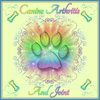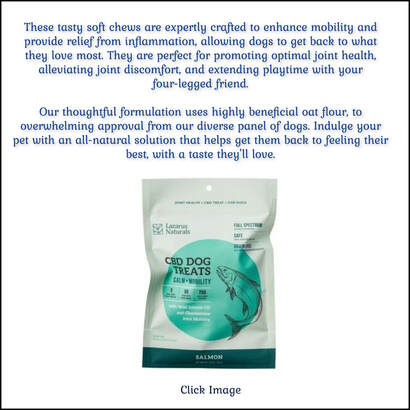Diskospondylitis (Spondylitis) in Dogs
|
|
*While this article talks about pain medications, you can also manage your dog's problems using anti inflammatory herbs
and joint supplements. By PetEducation
A dog's spine is made up of numerous small bones called vertebrae. These extend from the base of the skull all the way to the end of the tail. The vertebrae are interconnected by flexible discs of cartilage - the intervertebral discs. These discs provide cushioning between each bone and permit the neck, spine, and tail to bend, allowing changes in position and posture. Above the discs and running through the bony vertebrae is the spinal cord, which is made up of a mass of nerve fibers that run back and forth between the brain and the rest of the body. |
|
What is diskospondylitis?
Diskospondylitis (also spelled 'discospondylitis', and termed vertebral osteomyelitis') is a bacterial or fungal infection of the vertebrae and the intervertebral discs in dogs. The resulting swelling, inflammation and bone deformities seen in diskospondylitis put pressure or compression on the spinal cord which runs through the vertebrae. The disease is termed "spondylitis" when only the vertebrae are involved. The disease should not be confused with 'spondylosis,' which is a non-infectious fusion or degeneration of the vertebrae. What causes diskospondylitis? Diskospondylitis seems to occur most commonly in areas of the country that have a problem with plant awns (e.g., grass seeds, fox tails). It is thought that bacteria or fungi on the awns enter the blood system when the awns pierce the skin. Bacterial endocarditis, urinary tract infections, or dental disease/extractions may be another means by which bacteria enter the bloodstream and infect the vertebrae. Brucella canis has also been found to cause the disease in dogs. |
|
What are the symptoms of diskospondylitis?
Common symptoms of this disease include weight loss, lack of appetite, depression, fever, and back pain. Dogs with this disease are generally reluctant to run or jump. How is diskospondylitis diagnosed? Diagnosis of diskospondylitis can be difficult. Blood tests, urinalysis, radiographs (x-rays), and spinal taps may be necessary to diagnose the disease. Cultures of blood and urine are often performed to help isolate the cause and choose the appropriate treatment. Myelography may be indicated to determine the exact location of spinal compression. Surgery may be needed to reduce the compression on the spinal cord. |
|
How is diskospondylitis treated?
Treatment is based on finding the causative agent - fungal or bacterial. Because bone infections are difficult to treat, therapy lasts at least six weeks and may continue for six months or more. Taking radiographs at regular intervals during treatment helps monitor the progress. The lesions seen early in the disease should resolve with treatment. Clinical improvement (lessening of symptoms) usually occurs within two weeks of starting treatment. Pain medication may be needed early in treatment. Exercise restriction may help decrease the pain also. The prognosis depends on the ability to eliminate the infection and on how much nerve damage resulted from the spinal compression. |
Discospondylitis
|
By Vetary
What is Discospondylitis (Spondylitis)? Discospondylitis is the swelling of the vertebrae and the disks that surround them, as caused by either a bacterial or fungal infection. Discospondylitis, also spelled as diskospondylitis, is an infection of the vertebrae and the surrounding cartilaginous discs. It is also referred to as vertebral osteomyelitis and the swelling created by this disease can cause severe pain as well as nerve damage in afflicted dogs if left untreated. If your pet is displaying the symptoms of this kind of disorder, don’t hesitate to contact a veterinary professional. Timely intervention will help to prevent permanent damage to the compressed nerves and to the bone surrounding the spinal cord. Symptoms of Discospondylitis (Spondylitis) in Dogs The pressure that is put on the spinal cord due to swelling of the vertebrae and discs can cause a variety of symptoms, including: Abdominal pain Back pain or stiffness Collapse Depression Fever Hunched back Lack of coordination Lameness Loss of appetite Neck pain or stiffness Paralysis in one or more limbs Poor reflexes Reluctance to rise Shaking Staggering Tremors Weakness Weight loss Yelping unexpectedly when touched or moving |
|
Types
Discospondylitis (diskospondylitis) is an infection of the vertebrae and the discs that provide cushioning between the bones of the spine. If only the vertebrae are included in the infection, and the discs are spared, then it is known simply as spondylitis. There are a number of bacteria and fungi that can cause the infection that causes discospondylitis or spondylitis. These can include: Bacteria Brucella canis Clostridium perfringens Erysipelothrix rhusiopathiae Escherichia coli Pasteurella canis Proteus spp Pseudomonas aeruginosa Staphylococcus aureus, Staphylococcus intermedius Streptococcus spp Fungi Aspergillus terreus Paecilomyces variotii Scedosporium apiospermum |
|
Causes of Discospondylitis (Spondylitis) in Dogs
Several circumstances can increase the risk of this disorder developing. Previous infections such as UTI’s, abscesses, and contaminated wounds can move to the spinal column during treatment and proliferate unseen. Traumatic injuries that involve damage or fracturing of the bone can make it easier for the bacteria to invade the skeletal structure. Other conditions, such as chronic dental disease or postoperative complications, can influence the chances of this type of infection occurring. German Shepherd and Great Dane breeds are more likely to develop discospondylitis than other breeds. Diagnosis of Discospondylitis (Spondylitis) in Dogs There are a few disorders with very similar symptoms, such as intervertebral disk disease (IVDD), that this condition will need to be differentiated from. A physical examination will help your pet’s doctor to evaluate the general health of your dog and will also assist her in pinpointing the location of the pain. Preliminary blood tests, such as a complete blood count and biochemistry profile, will be done to determine if there are any infections or imbalances present. An electromyogram can be used to determine the electrical activity of the muscles, and a spinal tap may be done as well to get a sample of cerebrospinal fluid. In most cases, the analysis of the fluid will reveal both that there is an infection, and which bacterium or fungus is causing the inflammation. Radiograph (x-ray) imaging will be used to help visualize the location and extent of the disease, and a neurological examination may be done as well. In many cases, a contrast dye will be injected into the space around the spinal cord to better see the fluid’s movement within the spine during the x-ray procedure. |
|
Treatment of Discospondylitis (Spondylitis) in Dogs
The medication will vary somewhat depending on what diagnosis is reached. Bacterial infections will be treated with antibiotics, while antifungals will be utilized to defeat fungal infections. The treatment time for infections that affect the bone is considerably greater than other infections. A course of antibiotics or antifungals for this type of infection will usually take at least six weeks and may take up to six months. Anti-inflammatory medications will also be required to both manage pain and reduce pressure on the spinal cord itself. In critical cases, surgical intervention may be needed to debride deep wounds or to lessen the compression on the spinal cord. Exercise restriction will most likely be recommended until the swelling has been significantly reduced to prevent further damage to the spine. Your dog will need to have periodic x-rays to monitor the progress of the spine until both the infection and the swelling have been eliminated. Recovery of Discospondylitis (Spondylitis) in Dogs Some improvement may be noticeable in as little as two weeks, but it is important to ensure that your dog continues treatment until your dog’s doctor tells you it is safe to stop giving the medications. Discospondylitis is difficult to treat due to its location and as with other stubborn bacterial and fungal infections, early cessation of the prescriptions may result in the reoccurrence of the infection. Osteoarthritis often remains in the area of the infection, even after the infection is eliminated, and should be managed with appropriate pain relievers. Although the prognosis for dogs with bacterial infection is good with timely treatment, the prognosis is generally more guarded for dogs who contract a fungal infection instead. |
**Canine Arthritis And Joint is intended for informational, educational and entertainment purposes only and is not a substitute for medical advice, diagnosis or treatment. Do not attempt to self-diagnose or treat any health condition. You should always consult with a healthcare professional before starting any diet, exercise or supplementation program, before taking any medication, or if you have or suspect your pet might have a health problem. The opinions expressed by Canine Arthritis And Joint are not to be replaced for medical care. This website and the information contained herein have not been evaluated by the Food and Drug Administration. The information and opinions on Canine Arthritis And Joint are not intended and cannot be used to diagnose, treat, cure, or prevent any disease. This applies to people and pets!
This site uses affiliate links such as banners you may see that allows for paid commissions.
This site uses affiliate links such as banners you may see that allows for paid commissions.
Canine Arthritis And Joint © Copyright 2015-2024
Designed By Paw Prints Web Design
Designed By Paw Prints Web Design










